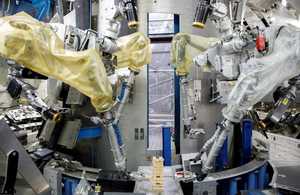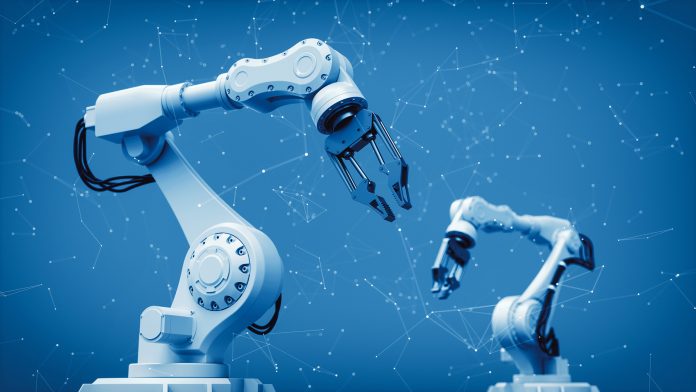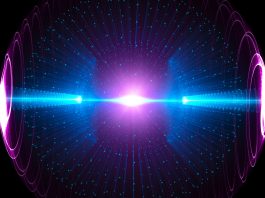A robot with a human touch, which is utilised to maintain a fusion energy machine – where temperatures can be hotter than the Sun – has been reunited with its identical twin for the first time since 1999.
Both known as MASCOT, the highly dextrous manipulators – the robots – are being put through their paces in a series of practice ‘rescue missions,’ where each saves its stranded sibling to limit the potential disruption to world-leading fusion energy research at the UK Atomic Energy Authority (UKAEA), Oxfordshire.
The development of ‘self-recovering’ robots to go where humans cannot, is crucial to making fusion energy a safe, sustainable and, a low-carbon energy source for generations to come.
The £1.5m, 32-month project was funded by the EUROfusion programme and developed by approximately 40 engineers at UKAEA’s robotics laboratory, RACE (Remote Applications in Challenging Environments) to support future science experiments on fusion energy machines, including JET and its successor, ITER, in the south of France along with fusion powerplants.
“Robotic systems are an integral part of putting fusion energy on the grid for the design and maintenance of future fusion powerplants. We cannot afford to have a robot that gets stuck,” explained Gary Hermon, Remote Handling Lead Technologist at UKAEA.
“The second MASCOT is now in place to train our remote handling team in rescue tasks ensuring its twin can always be saved when working on the maintenance of JET, our machine where EUROfusion researchers set a sustained fusion energy record announced earlier this year.”

Photo Credit: UK Atomic Energy Authority.
Using fusion energy for remote handling: Honing skills with Jenga
JET is currently the only fusion energy machine in the world that uses remote handling and robotics for maintenance, placing the UK at the forefront of this technology and expertise.
The meeting of the two MASCOTs is demonstrated in this video where engineers compete in a game of Jenga to hone their dexterity skills.
Each MASCOT has two arms with grippers that can operate over 900 bespoke tools. The MASCOTs are each deployed into JET – or its replica training vessel – on the end of an articulated 12-metre boom, driven by UKAEA’s remote handing team from a control room fitted out with live camera feeds and VR screens for additional precision views.
Skilled operators use two robot arms to control each MASCOT as it performs tasks, including replacing tiles, welding, cutting, dust collecting and surveying to maintain UKAEA’s fusion energy machine.
Robotics and other advanced technologies developed for fusion are expected to be useful for applications across other sectors, such as nuclear decommissioning, space exploration, mining, healthcare, and transport.
To find out more about remote handling and robotics at UKAEA, visit its website.









